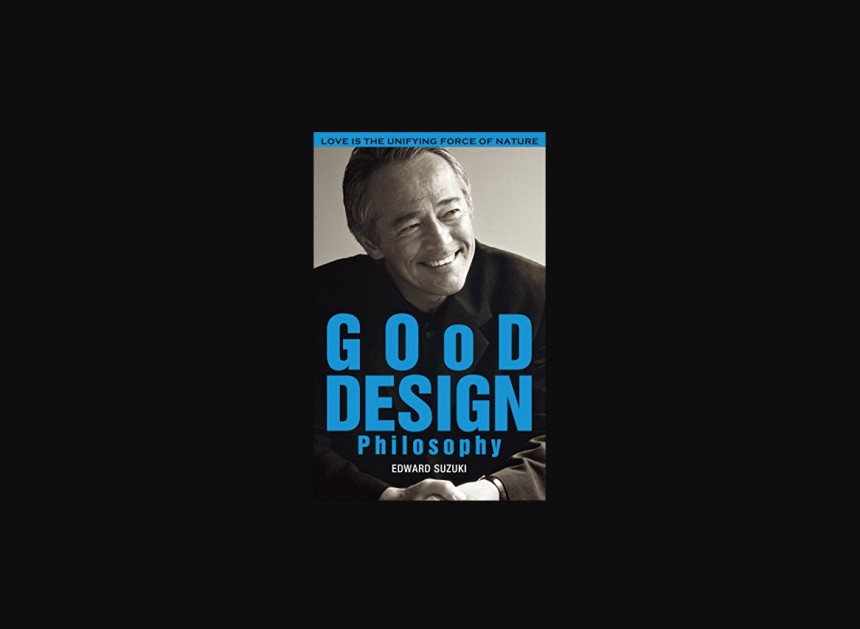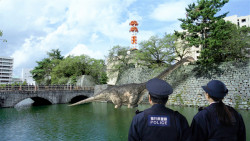
September 25, 2019
After a Forty Year Career, the Architect Becomes a Philosopher
A review of Edward Suzuki's memoir: GOoD Design Philosophy
By Patrick Parr
Just before the passing of renowned architect Edward Suzuki, Metropolis took a look at his most recent book in which he offers musings and insight beyond just architecture.
Ever since establishing his own practice in Tokyo in 1977, Edward Suzuki has strived to create innovative designs that “create spaces and situations that bring life’s simple joys to the fore.” His globe-trotting perspectives started back in 1966, when he left Japan after graduating from St. Mary’s International School to attend the University of Notre Dame. After absorbing maniacal Friday college football pep rallies and pulling all-nighters in the architecture department, Suzuki spent a year in Rome before graduating in 1971. Thanks to a Fulbright scholarship, Harvard followed, and after earning his Master’s in Urban Design in 1975, he was called back to Japan after receiving what he writes was a “love letter” from famed architect Kenzo Tange. Two years later, and voila, Edward Suzuki Associates was born.
Suzuki’s latest book, “GOoD Design Philosophy” (Shogakukan 2017) has had its own kind of kaleidoscopic journey. Born from a “collection of essays” posted on the Japanese web magazine Book People, the posts were later collected and published in Japanese by Shogakukan in 2013. Now, newly updated and translated into English, Suzuki’s memoir is far from a recollection of four decades in the field of architecture. It is instead a philosophical manifesto constructed to show that “love is the unifying force of nature.”
One of the many highlights in this book is Suzuki’s description of his Flying House design. In the early seventies, Suzuki’s idealism was in full force, and as a young and ambitious architect looking to make his mark, he believed ‘Flying House’ would cure many of the world’s ills. “For me it had symbolic and practical appeal…my dream for this project was to liberate man from the shackles of private land ownership and the exploitation of natural resources.” Suzuki writes on the next page, however, that he still harbors hopes for such an invention to exist: “How many lives could have been saved from northeastern Japan’s earthquake and subsequent tsunami in 2011, if only my Flying House had been commonplace by then? I still wish to speed its realization as soon as possible.”
Suzuki’s book can be enjoyed even if the reader only has a small amount of exposure to the field of architecture. Heartfelt odes to Buckminister Fuller are open enough to renew interest in Fuller’s geodesic dome, for example. It’s in Chapters 6 and 7 when Suzuki becomes refreshingly personal. He manages to express his own interpretation of synchronicity through the death of his mother. Pages later, when describing the “boundary between Life and Death,” Suzuki sings the philosophical body electric:
Everything in our Universe is a system of relationships. The same is true of life and death. Motion distinguishes life from death. The flow of our blood, the pulse of our heartbeat, the firing of a brain synapse — such enable the process we call life. When these actions cease, death ensues. In this manner it is rather easy for us to depict death. But what about the other way around?
Suzuki’s book is a game of genre hopscotch — from architecture, to math, science and then to spirituality — a panoply of thoughts akin to a stone skipping across time’s river. One passage from the prologue stays with me. Suzuki is describing the Earth and the nature of perseverance, but I couldn’t help but feel a harmonic tug toward our current cycle of madness: “We either break through or we break down. And what we need first and foremost is not a social but a personal revolution, an awakening of consciousness in each and every one of us.”
Patrick Parr is the author of The Seminarian: Martin Luther King Jr. Comes of Age.







